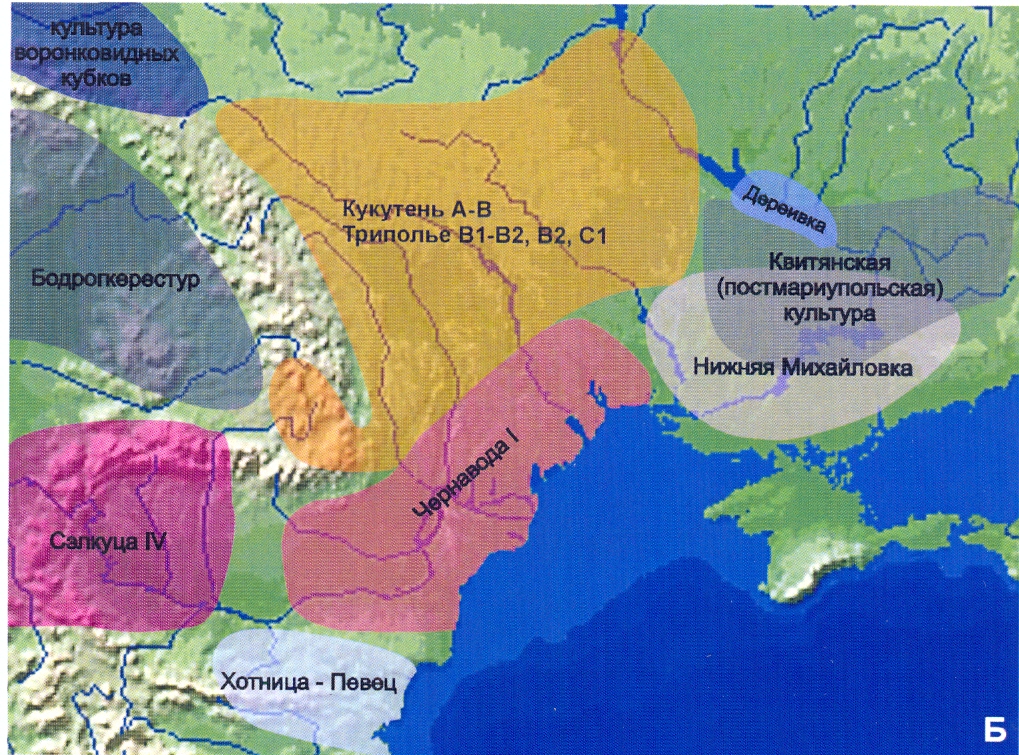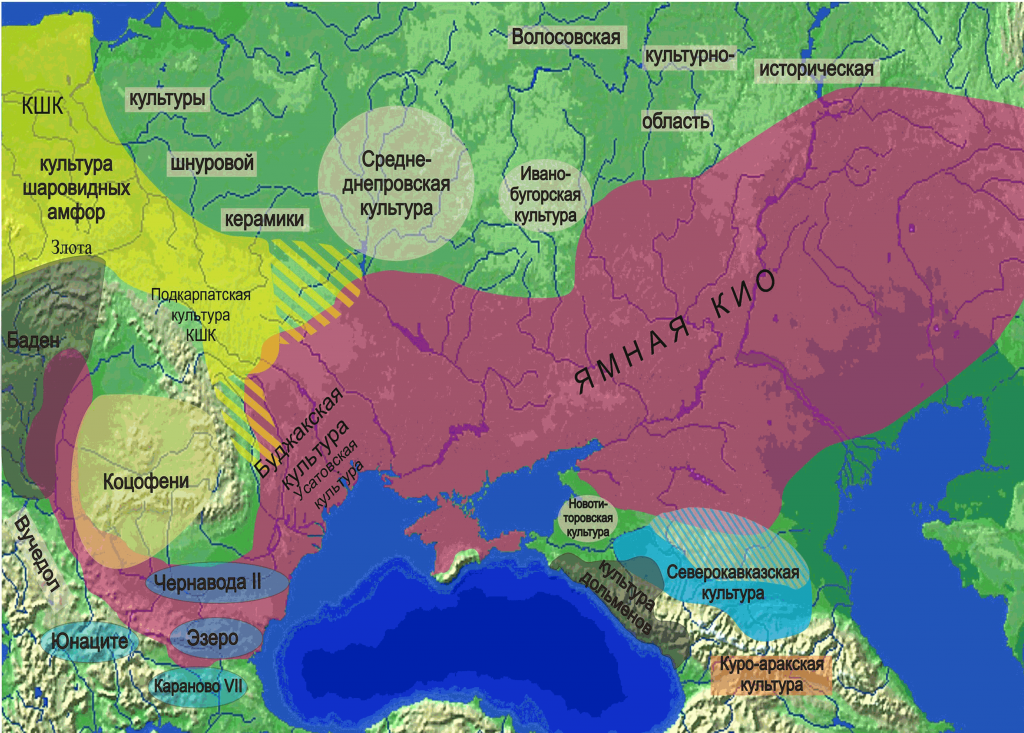I have already talked about the Russian school of thought and their position regarding a Mesolithic origin of Proto-Indo-European in Northern Europe (see below related posts).
Since their archaeologists (Ukrainian, Russian, and Kazakh) are the nearest to potential Indo-Uralic origins, I have also recommended to follow some renown researchers closely.
Recently Leo S. Klejn referred to the position of Svetlana Ivanova. I found a recent summary of her model for genetic finds in an article appeared in Генофонд.рф: Степное население в Центральной Европе эпохи ранней бронзы, или путешествие туда и обратно
Aspects I agree with
– There is a Yamna cultural-historical community (i.e. with a potential ethnolinguistic unity). Although many different inner groups can be distinguished (based on cultural, social, anthropological differences), one cannot divide the culture in distinct cultures.
EDIT (28 JAN 2018): You can read a more detailed report about the Yamna cultural-historical community, by Svetlana Ivanova (in Russian).
– There is an older Neolithic cultural-historical community of the Pontic-Caspian steppe (i.e. with a potential ethnolinguistic unity), marked in genetics by CHG ancestry in the region. It is impressive that they supported that before the Mathieson et al. third revision (september 2017) with their finding of “Yamnaya” component in Ukraine Eneolithic. Chapeau for archaeology, again.

Aspects I am neutral about, but are potentially quite relevant for the future
– Repin is a culture different from Yamna.
– The Budzhak culture is likely the heir of Repin, which is compatible with its expansion westward. According to Klejn and Anthony (Usatovo), this region was connected to (and might have influenced) the Corded Ware culture. Therefore – that is my contribution, not theirs – a hidden community of R1a-M417 subclades (that a lot of people are eager to find) might have stemmed from there.
EDIT (28 JAN 2018): Read papers about the Budzhak jars and asks, by Svetlana Ivanova (in Russian).
NOTE: In my opinion, as I have said before, the Budzhak/Usatovo-Corded Ware connection is too late to be meaningful for Genomic finds (taking into account the earliest Corded Ware samples, their steppe ancestry, and the TMRCA for R1a-M417 subclades) – it is after all a late group appeared during or after the Yamna expansion along the Danube ca. 3000 BC or later, as supported by most archaeologists today, see e.g. Rassamakin. The most likely model is that R1a-M417 subclades with steppe ancestry expanded from groups near Eneolithic Ukraine, whether from steppe, forest-steppe, or forest zone. Also, in my opinion (supporting Anthony’s original interpretation of Repin, as closely connected to Yamna) it is more likely that the (until now) ‘hidden’ western Yamna community hosting R1b-L51 subclades that later evolved into East Bell Beaker is in fact represented by Repin…
– Globular Amphorae and Corded Ware cultures are related, because GAC is actually not a uniform culture, but a ‘complex’ (i.e., in the same sense that Bell Beaker was not a culture, but a complex, as genetics has shown), and CWC is also a complex of cultures, as supported by Furholt. If that is true, the sampling of certain peoples classified as from Globular Amphorae – which some have rushed to cite as the end of the GAC-CWC connection might not be the last word, and Kristiansen’s model of long-lasting GAC-CWC connection may still be open.

Aspects I disagree with
– There is no migration, but long-lasting contacts that show up in genetics, since the Mesolithic-Neolithic transition. In my opinion, the
– Because this is the Russian school of thought, when they talk about Proto-Indo-European they refer to a homeland dating to the Mesolithic-Neolithic transition, and therefore cultural-historical communities after that (and long-lasting contacts) refer to potential continuations of Proto-Indo-European. Following common language guesstimates, though, there is no reason to date the split of Anatolian from a common Indo-Hittite before ca- 4500 BC, since there is no reason to date a Late Proto-Indo-European beyond 4000-3000 BC, apart from controversial glottochronological studies…
A call for collaboration
Again, please, geneticists, archaeologists, and linguists: do collaborate. Merely by talking, the so-called ‘Yamnaya ancestral component’ would have never been given that dreadful name, and maybe we could end this quest to find a Mesolithic homeland for a reconstructed language guesstimated to have been spoken millennia after that time (and maybe turn it into a quest for an older macro-language)…
Related:
- Science and Archaeology (Humanities): collaboration or confrontation?
- Massive Migrations? The Impact of Recent aDNA Studies on our View of Third Millennium Europe
- Something is very wrong with models based on the so-called ‘Yamnaya admixture’ – and archaeologists are catching up (II)
- Archaeological origins of Early Proto-Indo-European in the Baltic during the Mesolithic
- Something is very wrong with models based on the so-called ‘steppe admixture’ – and archaeologists are catching up
- The new “Indo-European Corded Ware Theory” of David Anthony
- The renewed ‘Kurgan model’ of Kristian Kristiansen and the Danish school: “The Indo-European Corded Ware Theory”
- Correlation does not mean causation: the damage of the ‘Yamnaya ancestral component’, and the ‘Future America’ hypothesis
- New Ukraine Eneolithic sample from late Sredni Stog, near homeland of the Corded Ware culture
- Germanic–Balto-Slavic and Satem (‘Indo-Slavonic’) dialect revisionism by amateur geneticists, or why R1a lineages *must* have spoken Proto-Indo-European